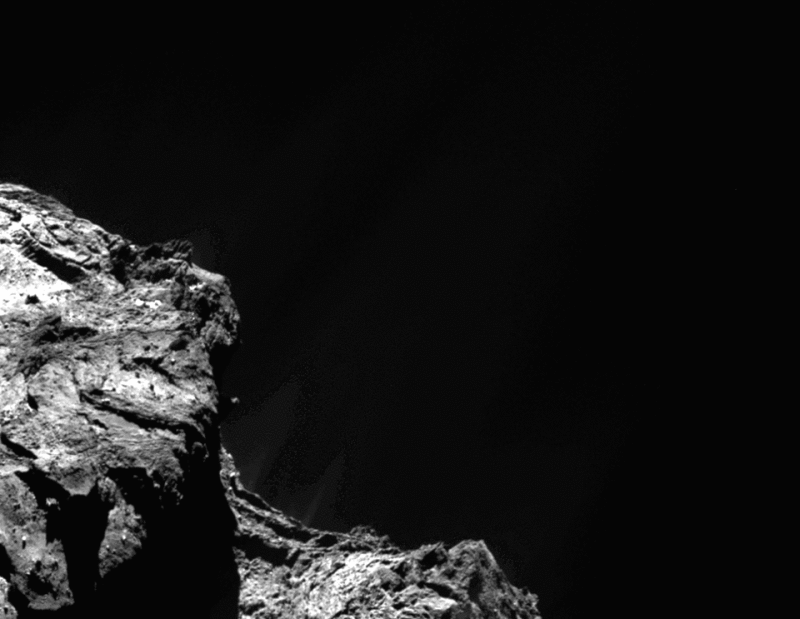
|
Explanation: There she blows! A dramatic demonstration of how short-lived some comet jets can be was documented in late July by the robotic Rosetta spacecraft orbiting the nucleus of Comet 67P/Churyumov-Gerasimenko. The featured animation depicts changes in the rotating comet with three illuminating stills. Although the first frame shows nothing unusual, the second frame shows a sudden strong jet shooting off the 67P's surface only 20 minutes later, while the third frame -- taken 20 minutes after that -- shows but a slight remnant of the once-active jet. As comets near the Sun, they can produce long and beautiful tails that stream across the inner Solar System. How comet jets produce these tails is a topic of research -- helped by images like this. Another recent Rosetta measurement indicates that the water on Earth could not have come from comets like 67P because of significant differences in impurities. Comet 67P spans about four kilometers, orbits the Sun between Earth and Jupiter, and has been the home for ESA's Rosetta spaceship since 2014 August. Rosetta is currently scheduled to make a slow crash onto Comet 67P's surface in late 2016.
Now Available:
APOD 2016 Wall Calendars
|
January February March April May June July August September October November December |
| |||||||||||||||||||||||||||||||||||||||||||||||||||||||
NASA Web Site Statements, Warnings, and Disclaimers
NASA Official: Jay Norris. Specific rights apply.
A service of: LHEA at NASA / GSFC
& Michigan Tech. U.
Based on Astronomy Picture
Of the Day
Publications with keywords: comet - jet
Publications with words: comet - jet
See also:
- APOD: 2025 December 1 Á 3I ATLAS: Tails of an Interstellar Comet
- APOD: 2025 November 25 Á Comet Lemmon and the Milky Way
- 3I/ATLAS: A View from Planet Earth
- APOD: 2025 November 17 Á Comet Lemmons Wandering Tail
- APOD: 2025 September 30 Á Comet Lemmon Brightens
- APOD: 2025 September 29 Á Two Camera Comets in One Sky
- APOD: 2025 September 26 Á A SWAN an ATLAS and Mars
